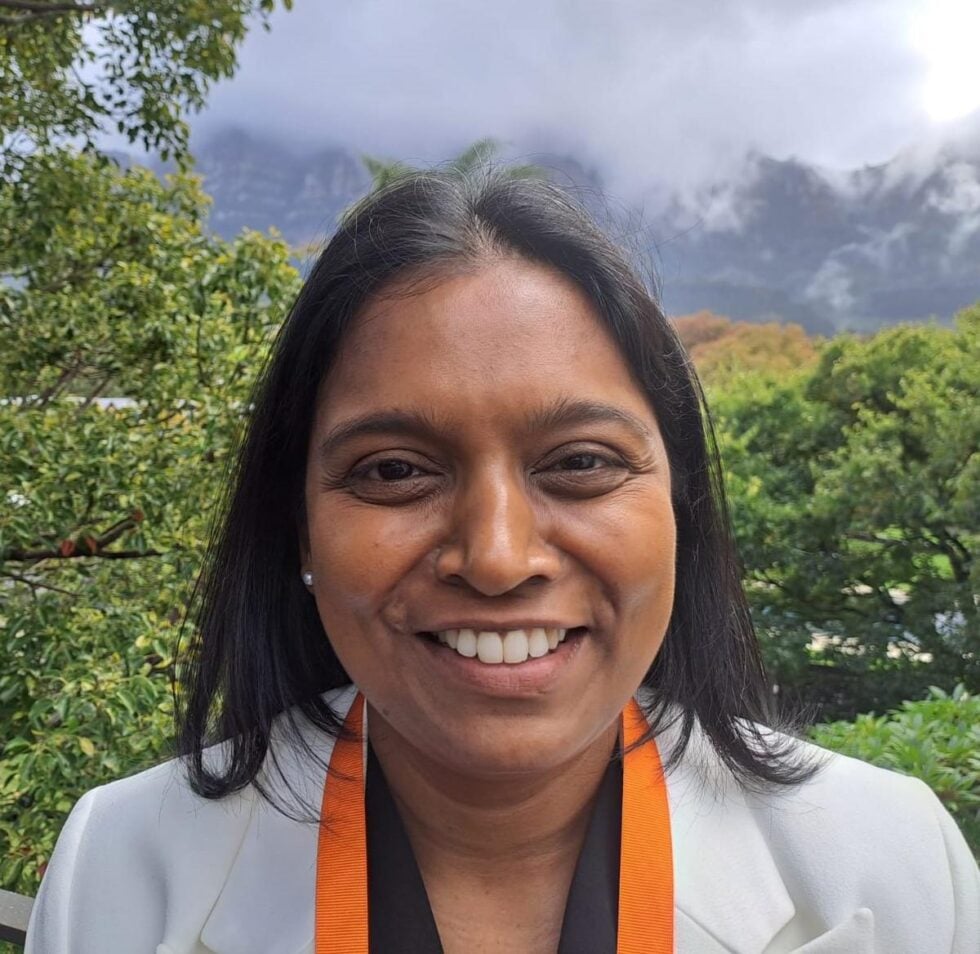
Photo: Palliative medicine doctor, Dr Raksha Balbadhur from Durban
This emerged from a study of 12 culturally diverse patients with terminal cancers and/or AIDS at the Verulam Regional Hospice and the Dolphin Coast Hospice in KwaZulu Natal, where dignity therapy and guided imagery were used to help improve their quality of life.
Dr Raksha Balbadhur, a palliative medicine doctor offering home-based care in Durban and the North Coast of KZN, was awarded “Best Presenter of the Day,” for her study showcased to 500 delegates at the Palliative Care Conference at the Vineyard Hotel in Cape Town at the end of last month.
Founder and chairperson of the Values in Healthcare Association of SA and a teacher of meditation, Balbadhur has run hundreds of experiential workshops across the country to support healthcare practitioners with compassion fatigue.
She added basic patient security needs such as food and money, shelter, transport, and access to medical care and/or medication to the symptom burden, frustration and dissatisfaction with medical care and loss of independence the dozen patients, aged 38 to 82, experienced. Four were Caucasian, four African and four Indian. Seven were men and five were women.
She said that by understanding the physical, psychological, social, and spiritual concerns of patients and their coping mechanisms, dignity, a core value in palliative care, could be restored.
As far as she was aware, there were no studies to understand the predominant factors that impinge on the dignity experience of dying South Africans from diverse socioeconomic and cultural backgrounds, nor were any formal dignity-enhancing interventions being practiced.
Her model suggested that an individual with underdeveloped psychological and spiritual coping mechanisms would suffer greater assaults to their dignity. However, if the assaults were large enough, these could override even well-developed psycho-existential coping mechanisms – which made support for building this capacity vital in the total care of patients.
Doctor attitude ‘crucial’
One patient, frustrated with their medical care told her that when he was not effectively diagnosed or treated by his doctors, he felt “absolutely lost.”
“He said when he had a consultation with one of his doctors, the doctor was clearly very much in a hurry and that when he complained about pain, he poo-poo’d it.”
The patient added that one doctor had even called him a drug addict which left him feeling ‘undermined and devastated, distrusting and unsupported, given that he had put his life in their hands.’
Another patient said of his chemotherapy, “it kills you slowly. I just need a gun. I just wanted to shoot myself and get it over with because of so much of pain – it was unbearable.”
Another immobile patient said his happiest moment was when he could, “just sit here and have no pain – a lot of my time is spent in pain, a lot, a lot, a lot.”
One breadwinner worried about being unable to work and financially support her children and that the one-bedroomed home she lived in with her four children was too small. Another said his son dropped him at the taxi rank and he had to push his wheelchair to get to the hospital, while one said the hospital had run out of his basic medication.
Nearly all suffered a loss of vitality and body image in relation to others or a cultural norm, losing their hair and nails and finding their clothes loose fitting.
Balbadhur said spiritual concerns fluctuated on a pendulum, with those ‘wanting to live’ having good symptom control, respect, compassionate care, social support, affirmed intrinsic worth, strong psycho-existential resilience, and coping mechanisms.
Conversely, the factors that swung the pendulum to ‘wanting to die’ were symptom burden, feeling disrespected, devalued by society, being a burden on others, the loss of identity/role, psycho-existential worries, and distress.
The loss of cognitive capacity was feared by some study participants as the worst insult to their dignity, she said, quoting one as saying, “The worst thing for me will be… if I lose my mind, that is if I forget what I have been and what I want to do.”
Among the spiritual coping mechanisms was the affirming of intrinsic self-worth, maintaining hope, acceptance and letting go, plus gratitude, the last she described as being, “the quality of being thankful and a readiness to show appreciation for and return of kindness. One participant said there were people worse off than her so she must thank God that she was in this position where she was better off than a lot of people out there.”
A predominant theme she had come across in the South African population was support for organised religion and places of worship – often taking the place of failed social structures.
Balbadhur said her team’s interventions have improved relationships with healthcare professionals and sensitised patients and families, with immediate benefits to healthcare professionals and the twelve patients. It also improved patients’ dignity and their will to live.
She said the study showed that some people with advanced diseases could retain their dignity while others could not.
- Dignity therapy elicits a patient’s remembered life history, where they felt most alive, things they wanted their family to know about them or remember them by, the most important roles they’d played, their accomplishments, things unsaid to loved ones which they wanted to say, and their hopes and dreams for their loved ones. It also focuses on learnings they want to pass on and helping prepared loved ones for the future.
- Guided imagery focuses on intrinsic dignity and self-worth through progressive bodily relaxation and breathing and letting go of pretence or masks of roles and responsibilities.